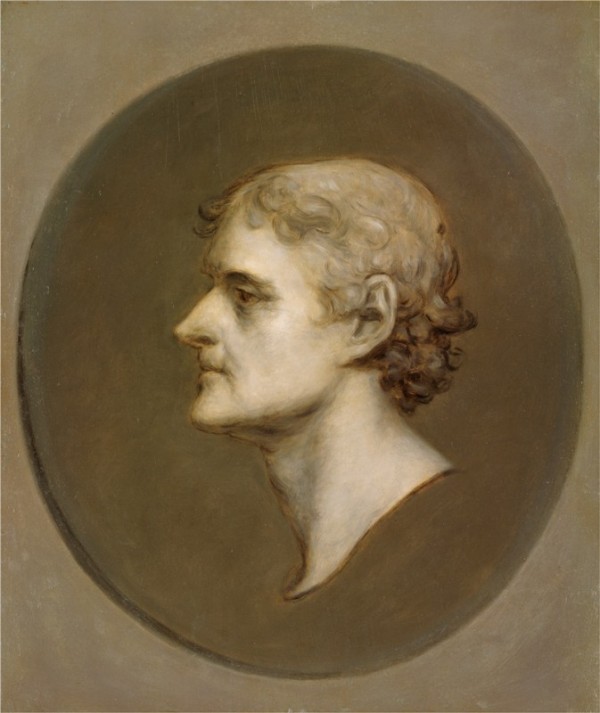
Charles Bird King, Thomas Jefferson, 1836. Oil on panel. 19 1/2" x 16 1/4". (Courtesy, National Portrait Gallery, 92.110.) Nicholas Philip Trist commissioned this portrait. King copied an earlier likeness by Gilbert Stuart, which was the favorite of Jefferson and his family.
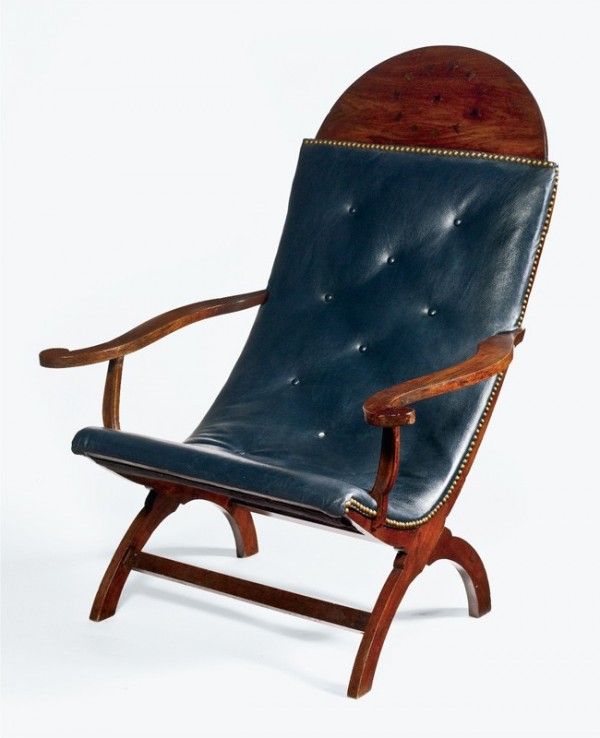
Campeachy chair, New Orleans, Louisiana, 1818. Cherry, rosewood, and lightwood inlays. H. 42 3/4", W. 22 1/2", D. 20 9/16". (Chipstone Foundation; photo, Gavin Ashworth.)
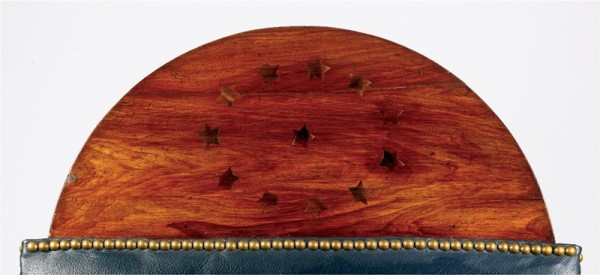
Detail of the inlay on the crest of the chair illustrated in fig. 2.
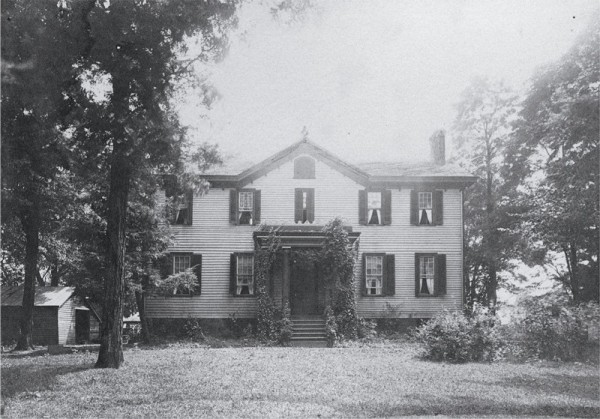
Pen Park, Albemarle County, Virginia, 1888 (Courtesy, Valentine Richmond History Center, V.45.47.335; photo, Robert A. Lancaster Jr.) Pen Park was north of Charlottesville.
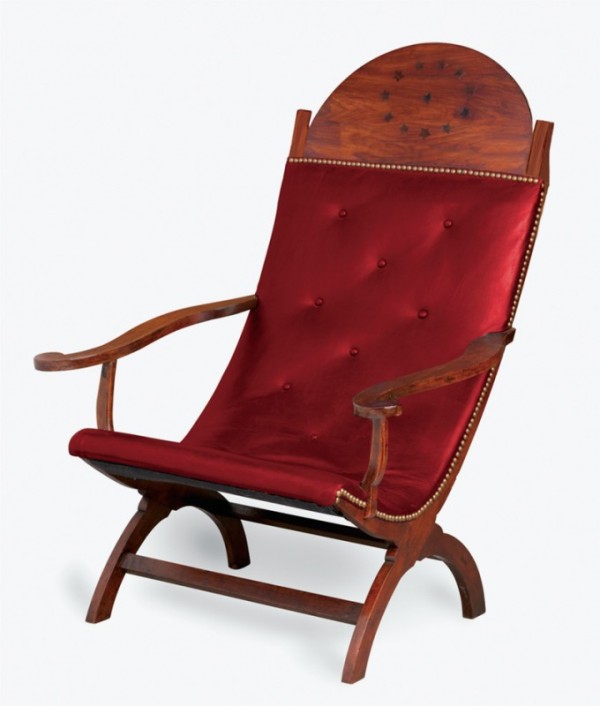
Digital reconstruction of the Campeachy chair illustrated in fig. 2, showing it with red leather and the stiles extended above the upper upholstery line.
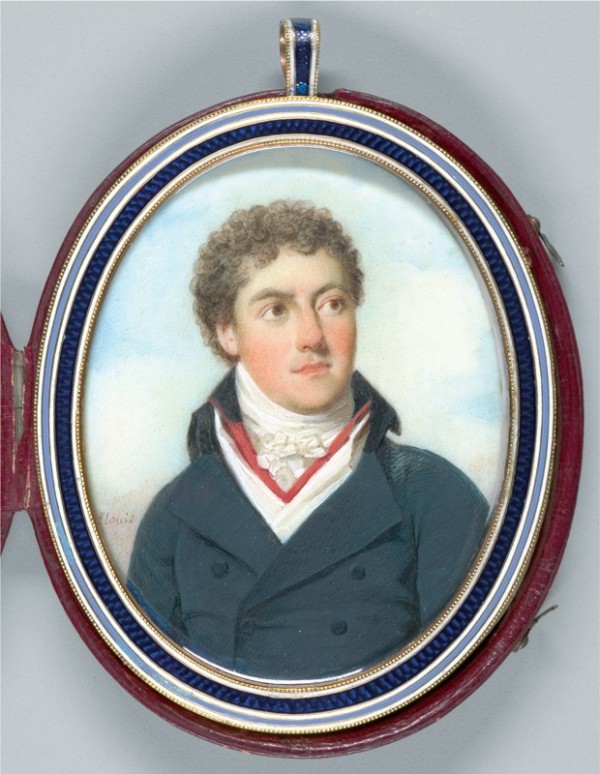
Henri Elois, Hore Browse Trist, 1798–1799. Watercolor on ivory. 3 1/8" x 2 1/2". (Courtesy, Yale University Art Gallery, 1936.303.)

Charles Auguste Balthazar Julien Févret de Saint-Mémin (1770–1852), Thomas Bolling Robertson, 1808. Chalk on pink paper. 22" x 16 3/4". (Courtesy, Historic New Orleans Collection, 2011.0408, acquisition made possible by the Laussat Society.)
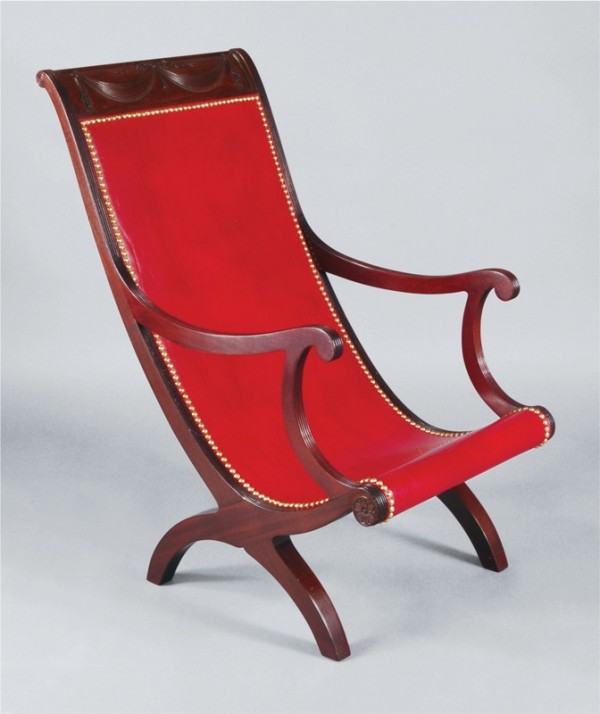
Campeachy chair attributed to William Worthington, Washington, D.C., 1815–1820. Mahogany with tulip poplar and yellow pine. H. 37 1/2", W. 21", D. 31 1/2". (Courtesy, Peter W. Patout, New Orleans; photo, Ellen McDermott, New York.)

John Neagle (1796–1865), Nicholas Philip Trist, 1835. Oil on canvas. 15" x 13". (Courtesy, Thomas Jefferson Foundation, Inc., Monticello.)
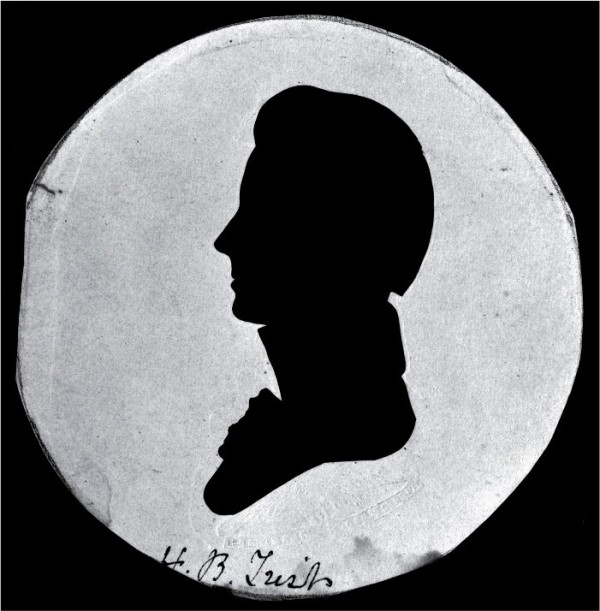
Charles Willson Peale, Hore Browse Trist, ca. 1820. Cut paper. 2 15/16" x 1 1/2". (Courtesy, Thomas Jefferson Foundation, Inc., Monticello.)

Campeachy chair attributed to John Hemings, Monticello joinery, Albemarle County, Virginia, 1819–1820. White oak. H. 43", W. 28 7/8", D. 20 3/16". (Chipstone Foundation; photo, Gavin Ashworth.) Hemings’s chairs are sturdier than the Louisiana prototype (fig. 2) and were more capable of sustaining heavy use on a Virginia plantation. The legs, seat, and back of his chairs are made from 1 1/4" stock, their arms and arm supports from 1" stock, their crests are cut from 7/8" boards, and their stretchers are made from 3/4" stock. The corresponding stock dimensions on the Louisiana chairs are 7/8", 7/8", 3/4", and 5/8".
Hemings’s stock is heavier than that used for the Louisiana prototypes, but he went to considerable effort to produce a chair of similar dimensions. The Cabell chair is 43" high, 22" wide across the back, 20 3/16" deep at the feet, and has a crest 12 3/4" in height. On the Trist-Gilmer example, the corresponding dimensions are 42 1/2", 22 1/2", 20 9/16", and 12 1/2".
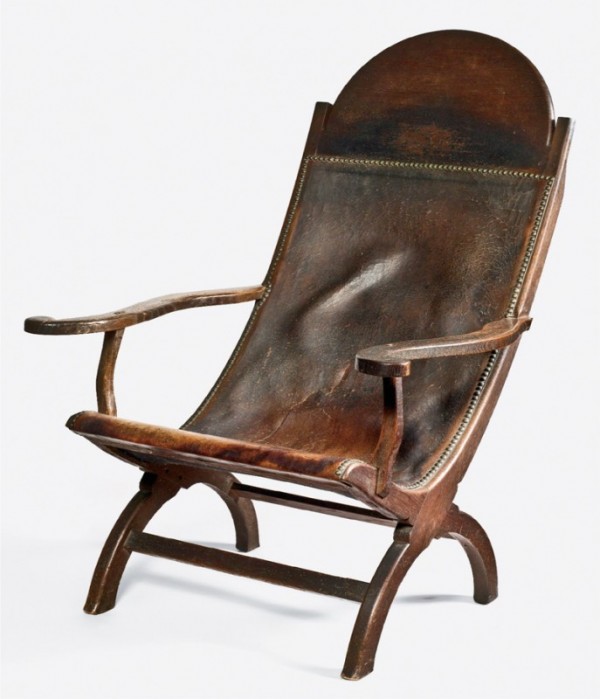
Campeachy chair attributed to John Hemings, Monticello joinery, Albemarle County, Virginia, 1815–1824. White oak; leather, brass nails. H. 45", W. 27 1/4", D. 33 1/2". (Private collection; photo, Gavin Ashworth.)
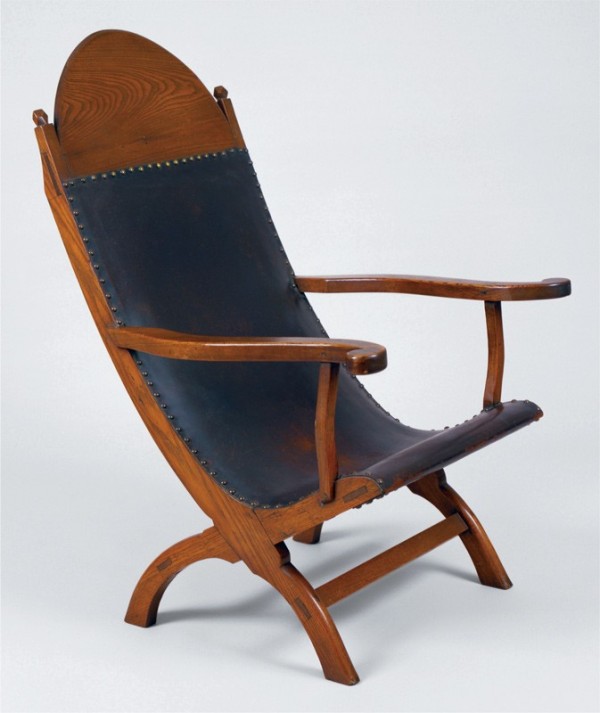
Campeachy chair attributed to John Hemings, Monticello joinery, Albemarle County, Virginia, 1815–1824. White ash. H. 42 1/4", W. 28", D. 32". (Courtesy, Thomas Jefferson Foundation, Inc., Monticello.)

Edgewood, Nelson County, Virginia, 1888. (Courtesy, Robert L. Self and Briscoe Guy; photo, Robert A. Lancaster Jr.)
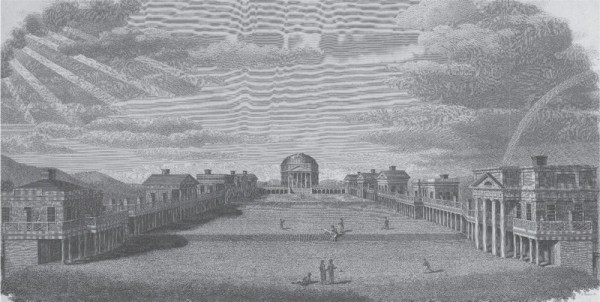
Herman Böye, View of the “University of Virginia, B. Tanner, Sc.,” cartouche on A map of the state of Virginia, constructed in conformity to law, from the late surveys authorized by the Legislature and other original and authentic documents, 1825 (Richmond: State of Virginia, 1859). (Courtesy, Albert and Shirley Small Special Collections Library, University of Virginia.)
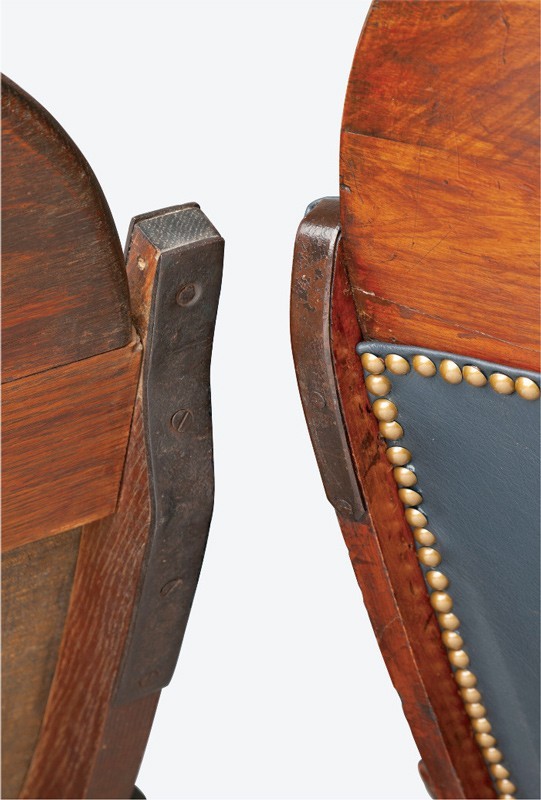
Detail of the iron reinforcements on the chairs illustrated in figs. 11 (left) and 2 (right). (Photo, Sumpter Priddy III.)

Drawing of a single shoulder tenon on the Campeachy chair illustrated in fig. 11.
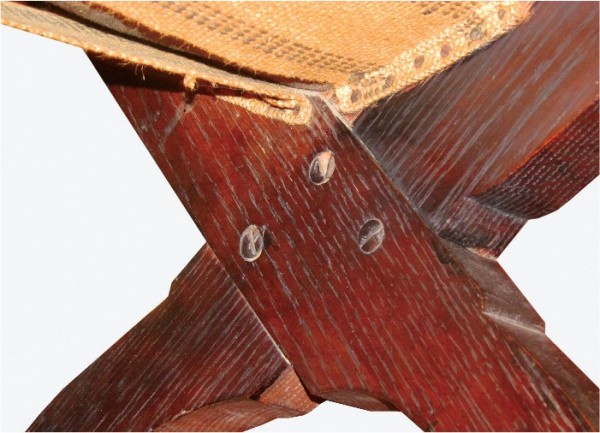
Detail of the three screws securing one of the half-lapped leg joints of the chair illustrated in fig. 11. (Photo, Sumpter Priddy III.)
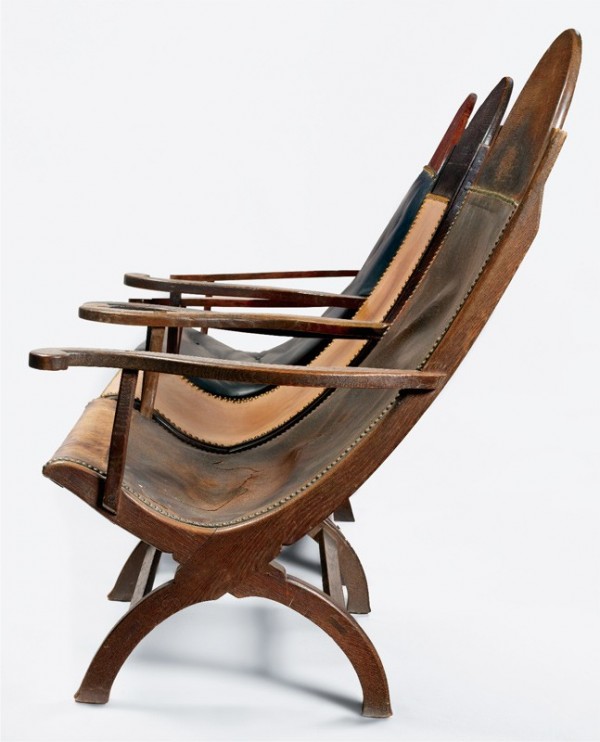
Detail of the profiles of the chairs illustrated in figs. 12 (front), 11 (middle), and 2 (back). (Photo, Gavin Ashworth.)
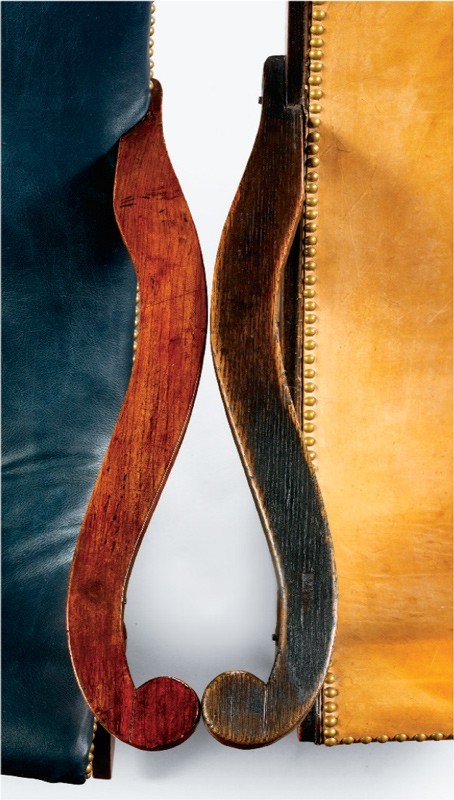
Detail of the arms of the chairs illustrated in figs. 2 (left) and 11 (right). (Photo, Gavin Ashworth.)
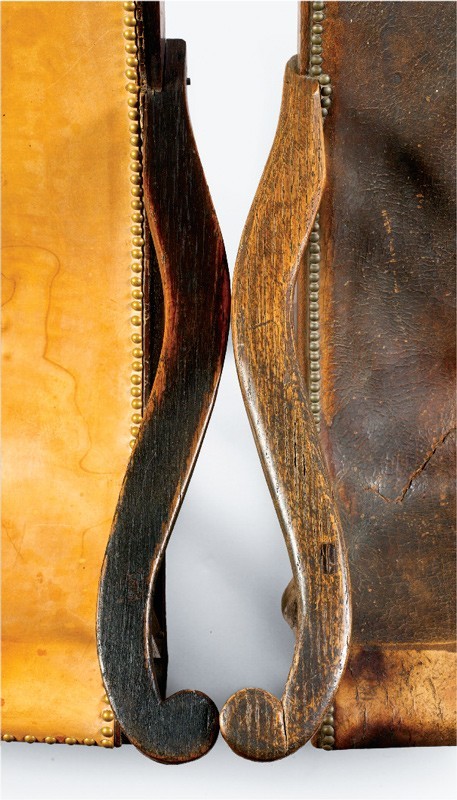
Detail of the arms of the chairs illustrated in figs. 11 (left) and 12 (right). (Photo, Gavin Ashworth.)

Detail of the front seat joints of the chairs illustrated in figs. 2 (left) and 11 (right). (Photo, Keith Lackman and Brendan Varley.) The improperly replaced arm support visible in fig. 11 has been correctly restored.
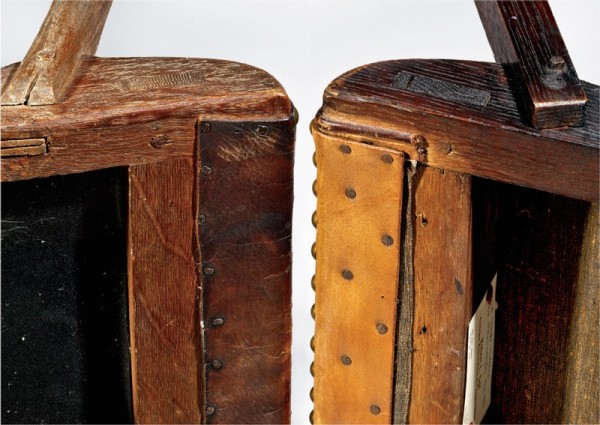
Detail of the front seat joints of the chairs illustrated in figs. 12 (left) and 11 (right). (Photo, Gavin Ashworth.)
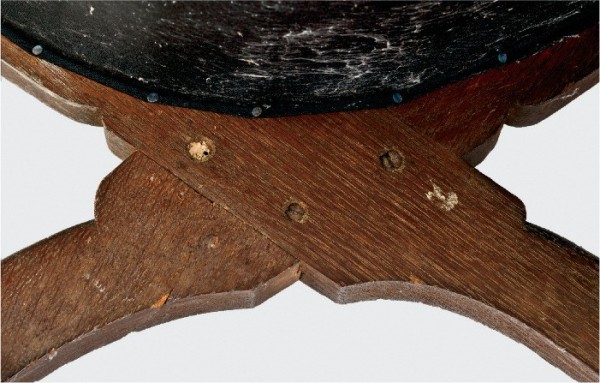
Detail of the three screws securing one of the half-lapped leg joints of the chair illustrated in fig. 12. (Photo, Gavin Ashworth.)

Detail of the arm supports of the chairs illustrated in figs. 2 (left) and 12 (right). (Photo, Gavin Ashworth.)
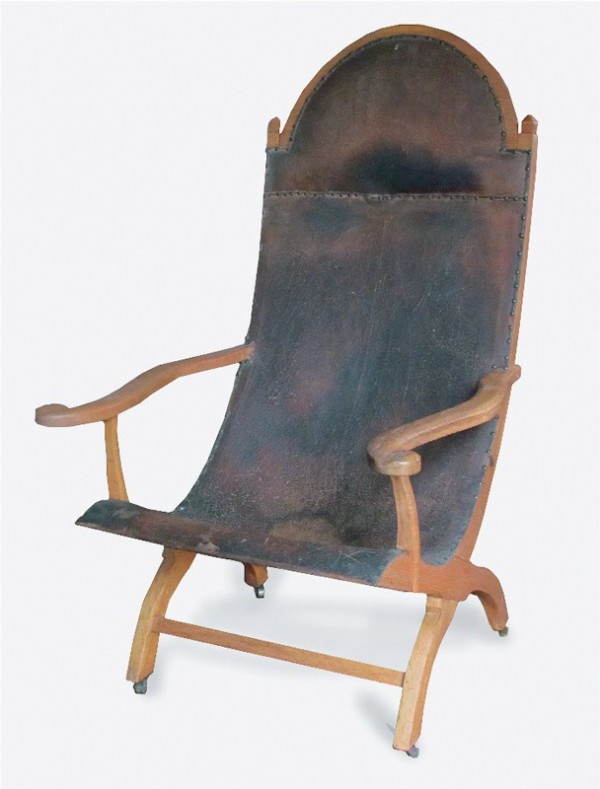
Campeachy chair, probably Albemarle County, Virginia, 1830–1840. Oak; leather, brass nails. H. 49 1/2", W. 24", D. 30 5/8". (Courtesy, Matthews County Circuit Court and Thomas Jefferson Foundation, Inc., Monticello; photo, Sumpter Priddy III and Brendan Varley.)
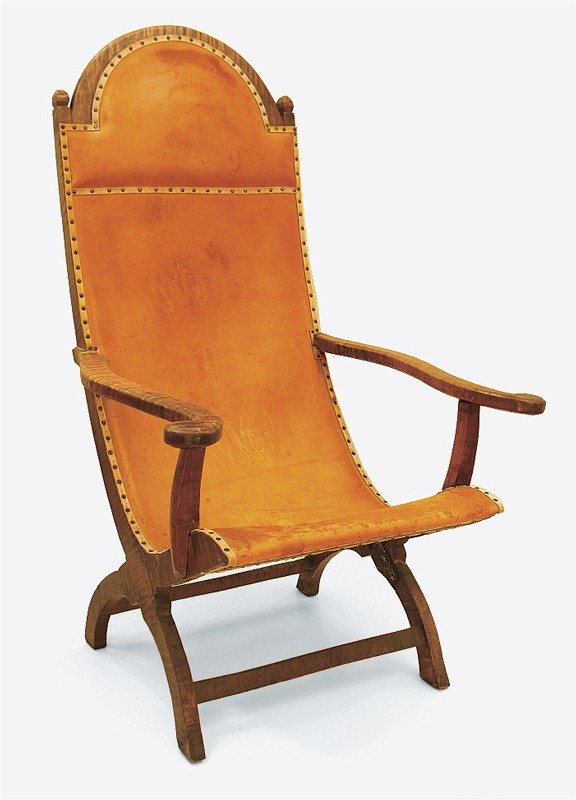
Campeachy chair, probably Albemarle County, Virginia, 1830–1840. Curly maple. H. 43 3/4", W. 28 5/8", D. 31 1/2". (Courtesy, Anne Ryland Glubiak Collection; photo, Historic New Orleans Collection.)
